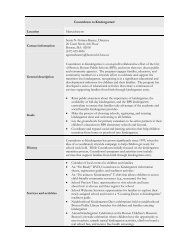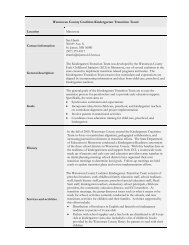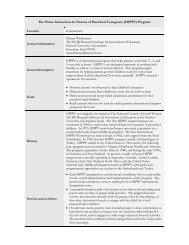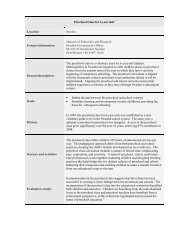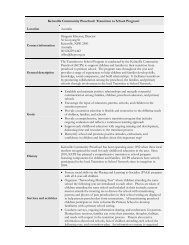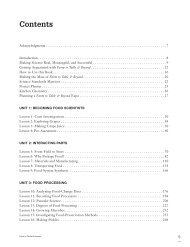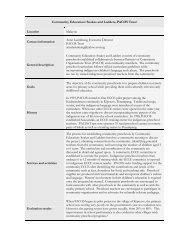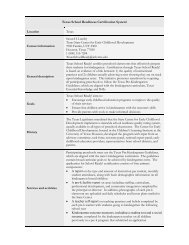Proceedings of the Fourth Annual Teachers College Educational ...
Proceedings of the Fourth Annual Teachers College Educational ...
Proceedings of the Fourth Annual Teachers College Educational ...
Create successful ePaper yourself
Turn your PDF publications into a flip-book with our unique Google optimized e-Paper software.
Total 3 Advanced Performance Level<br />
Total 81 Percent Correct<br />
Listening 3 Advanced Performance Level<br />
Listening 88 Percent Correct<br />
Reading 3 Advanced Performance Level<br />
Reading 72 Percent Correct<br />
Speaking 3 Advanced Performance Level<br />
Speaking 83 Percent Correct<br />
Writing 3 Advanced Performance Level<br />
Writing 85 Percent Correct<br />
KSA General 2010-2011 - Mar 01, 2011 (Grade 04)<br />
Math 89 Exemplary Raw<br />
Reading 91 Exemplary Raw<br />
Science 75 Exceeds Standard Raw<br />
Upon examining Oscar’s test results and grades, an obvious discrepancy appeared. Since Oscar scored<br />
consistently high on <strong>the</strong> language arts portions <strong>of</strong> <strong>the</strong> KSA (Kansas Student Assessment), in fact<br />
“Exemplary” with a 91 raw score, as well as <strong>the</strong> MAP why did he score at a Level 3 on <strong>the</strong> KELPA?<br />
As <strong>the</strong> project developed, I first examined <strong>the</strong> year-end pr<strong>of</strong>iciency scores <strong>of</strong> ELL students in reading and<br />
math. I chose this particular fifth grade class because <strong>the</strong> teacher was new to <strong>the</strong> district, although not<br />
new to teaching. With this in mind, I spoke to <strong>the</strong> teacher regarding <strong>the</strong> project, and she was eager for<br />
any classroom support that would be available. Ano<strong>the</strong>r reason I chose fifth grade in particular was<br />
because I taught communication arts in a middle school for eight years. This presented valuable insights<br />
into <strong>the</strong> vertical curriculum that students would be expected to master. As students advance in grade<br />
level, <strong>the</strong> correlation between successful school performance and success in later life, whe<strong>the</strong>r it be<br />
college or a trade, becomes more positive. Therefore, I deemed it essential that any student evidencing a<br />
learning gap should be given <strong>the</strong> opportunity to close it before reaching <strong>the</strong> secondary level. Although<br />
teachers at all levels are concerned with student achievement, it is <strong>of</strong>ten more propitious to defuse any<br />
potential difficulties while still in elementary school, where an <strong>of</strong>ten decided advantage is that <strong>the</strong><br />
classroom teacher usually interacts with <strong>the</strong> student all day, not to mention increasing pressures on<br />
students, such as peer interactions, that <strong>of</strong>ten surface, and can interfere with learning, at <strong>the</strong> middle<br />
school level. For this particular project, I chose a high achieving (pr<strong>of</strong>icient) student, who evidenced a<br />
learning gap between his NCLB test performance and language pr<strong>of</strong>iciency.<br />
We chose blogging as a way to remedy this situation, since <strong>the</strong> district was presently involved in a “year<br />
<strong>of</strong> study” regarding writing in <strong>the</strong> curriculum as aligned with <strong>the</strong> common core. A weblog (or 'blog') can be<br />
thought <strong>of</strong> as an online journal that an individual can continuously update with his or her own words,<br />
ideas, and thoughts as in an “online diary.” Ano<strong>the</strong>r feature <strong>of</strong> blogging is that similar to an open journal,<br />
<strong>the</strong> accumulation <strong>of</strong> writings and o<strong>the</strong>r content creates both a record <strong>of</strong> learning and a resource for<br />
o<strong>the</strong>rs. In addition, a weblog is interactive, in <strong>the</strong> sense that readers can respond to any given entry with a<br />
comment and even threaded discussions can take place depending on <strong>the</strong> characteristics <strong>of</strong> <strong>the</strong> blog.<br />
We chose “Kidblog” (www.kidblog.org) as our platform, due to its simplicity and ease <strong>of</strong> use for digital<br />
“natives” and “immigrants” alike. We chose a hybrid <strong>of</strong> <strong>the</strong> “Tutor,” “Learner,” and “Class” blogs, as<br />
described by Campbell (2000).<br />
The “Tutor” blog is a type <strong>of</strong> weblog that is run by <strong>the</strong> tutor (teacher) for <strong>the</strong> learners. It serves <strong>the</strong><br />
following purposes:<br />
• It gives daily reading practice to <strong>the</strong> learners. Sometimes students find assigned reading<br />
material too boring, difficult, or hard to relate with. This is because it is <strong>of</strong>ten written with ano<strong>the</strong>r<br />
purpose in mind. Entries are kept short, geared towards <strong>the</strong> learner interest, and linked to related<br />
online sources for fur<strong>the</strong>r reading if desired. Vocabulary used in class can be recycled this way.<br />
New vocabulary words can be linked to definitions on o<strong>the</strong>r sites found with a search engine.<br />
36



